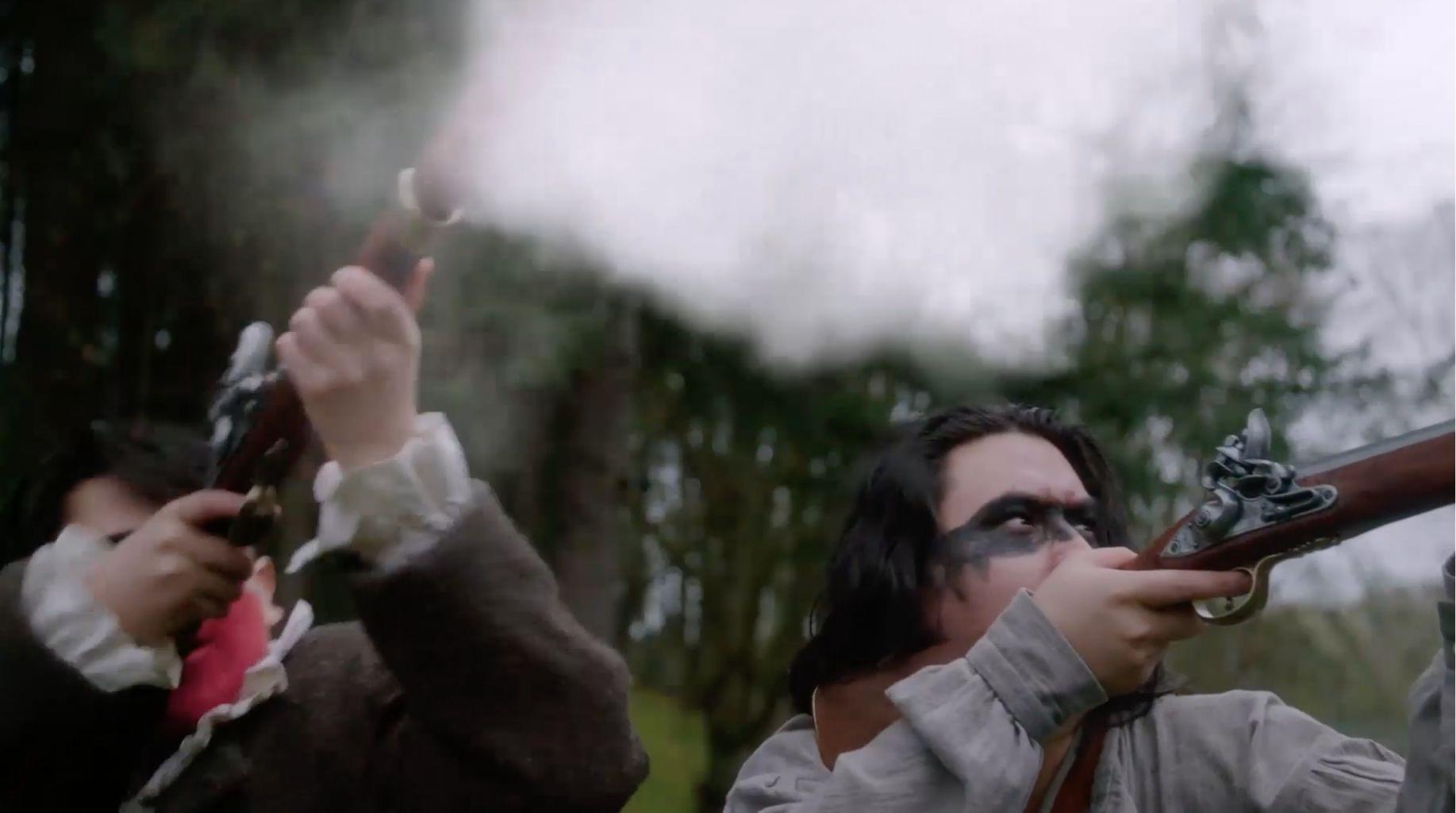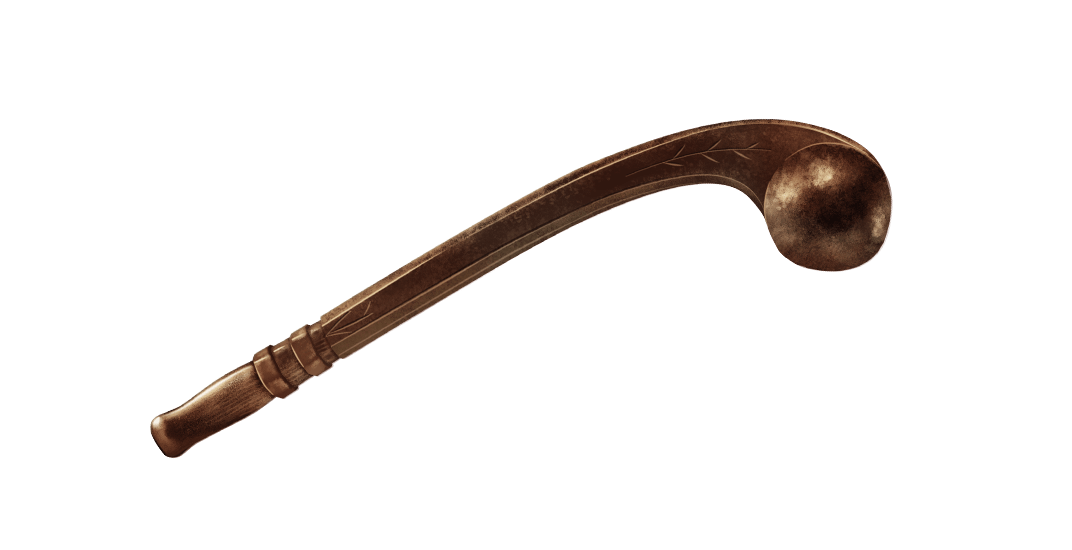

Ball Headed Club
Carried by Haudenosaunee warriors for at least a century before Europeans arrived, the Ball Headed Club was used in combat as late as the War of 1812.
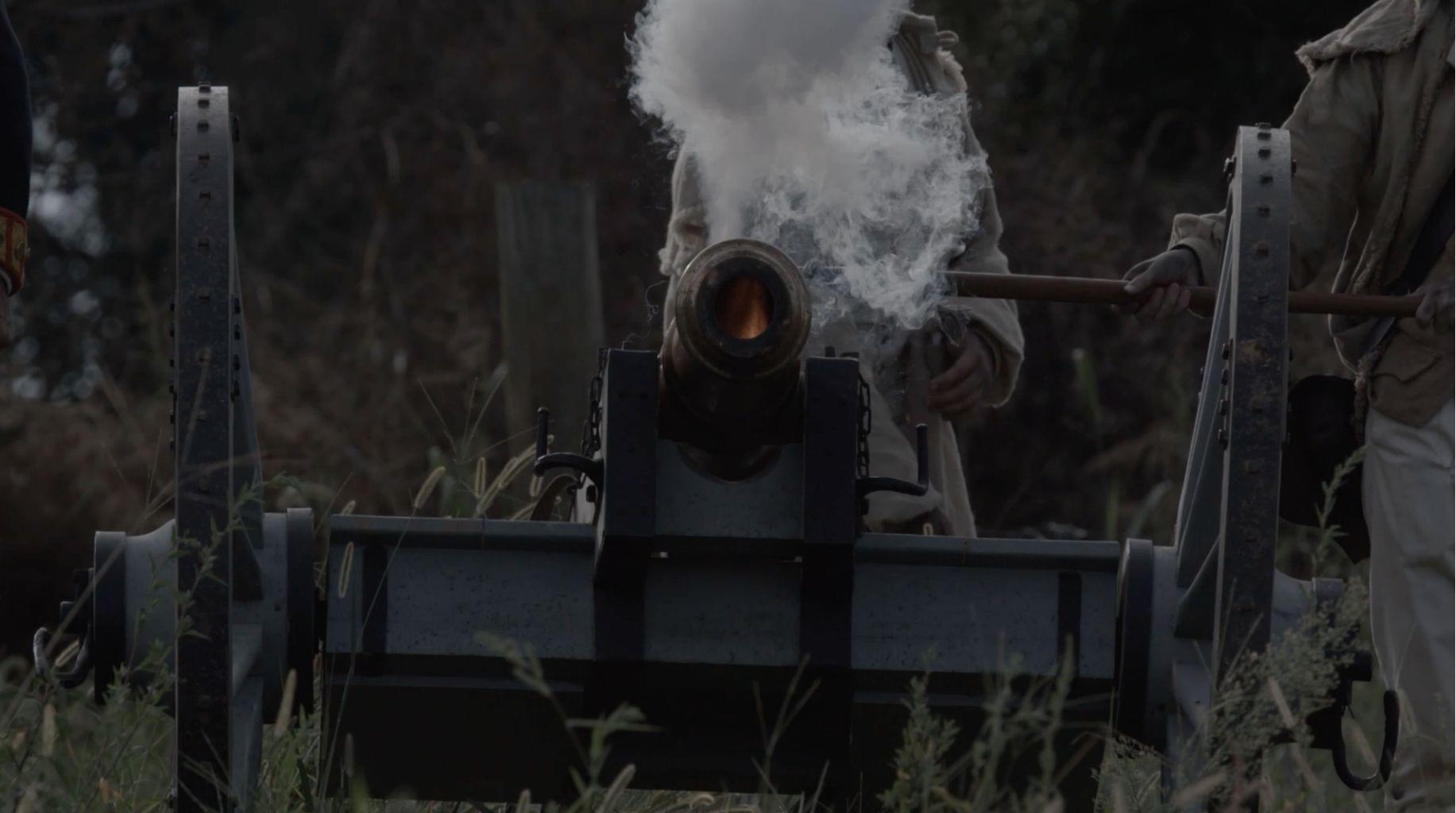
1754–1763
Explore
Though it is named the Seven Years War, the first truly global conflict actually raged for nine years, the first two of which were fought exclusively in North America. The war began in 1754, when a young British-American officer named George Washington attacked a French patrol at Jumonville Glen, Pennsylvania. The attack ended in disaster when Washington’s Mingo Tanahgrisson killed a 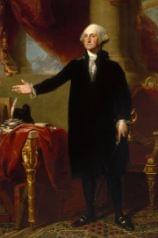 George Washington rose to prominence in the Seven Years War French prisoner. The French swiftly counter-attacked and captured Washington at Fort Necessity, forcing him to sign a French document in which he claimed responsibility for the attack. This document became a justification for war as France and Britain mobilized their armies for an undeclared war in North America. The following year Britain attempted a series of offensives against France’s frontier forts, but most were defeated or fought to a draw by French forces. Key to France’s early success was the support of Indigenous allies like the Abenaki and Odawa, who provided warriors skilled in woodland’s combat.
George Washington rose to prominence in the Seven Years War French prisoner. The French swiftly counter-attacked and captured Washington at Fort Necessity, forcing him to sign a French document in which he claimed responsibility for the attack. This document became a justification for war as France and Britain mobilized their armies for an undeclared war in North America. The following year Britain attempted a series of offensives against France’s frontier forts, but most were defeated or fought to a draw by French forces. Key to France’s early success was the support of Indigenous allies like the Abenaki and Odawa, who provided warriors skilled in woodland’s combat.
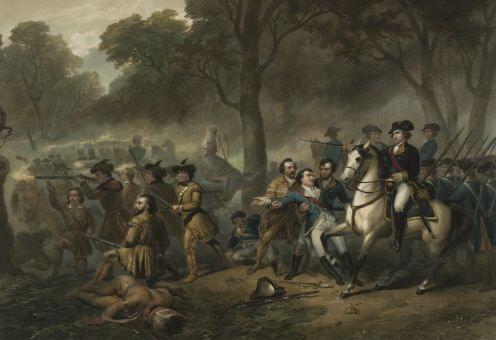
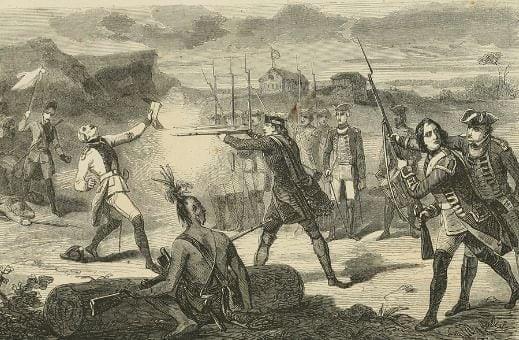
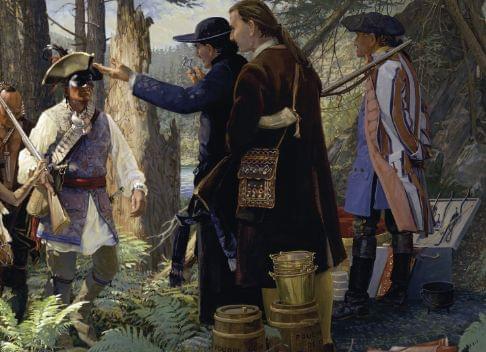
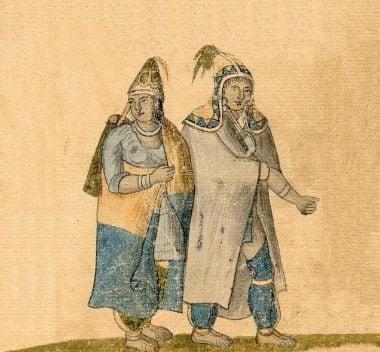
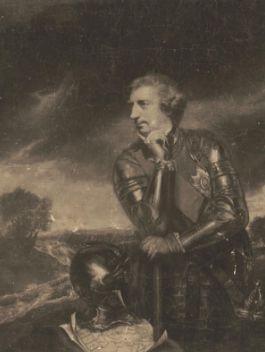
By 1756, the fighting had grown so intense in North America that the Kingdom of Prussia took of advantage of France’s distraction to annex portions of Saxony. This action prompted most of Europe’s major powers to join the war on France’s side, forcing Britain and Prussian into an alliance of convenience. Despite their lack of allies, Britain enjoyed major advantage in naval power, preventing a direct strike against their homeland and limiting the amount of reinforcements France could send to their colonies. Britain also had over a million colonial subjects in North America, from which they could raise fresh regiments to throw against French forces.
Before long, the fighting between the two rival coalitions spread across the planet to even the remotest European colonies and outposts.
In the North America, the conflict became increasingly brutal as the First Nations and European settlers raided each other’s communities in a bitter guerrilla war for control of the land.
Eastern North America, India, Caribbean, Europe, West Africa, Florida


Franco-Indigenous Alliance
After a century and a half of success, the Franco-Indigenous alliance which entered the Seven Years War, was profoundly weaker than in the past. Indigenous partners like the Wabanaki Confederacy, Wendat and Anishinaabe had been decimated by decades of war and disease. While the French forces were riven by infighting between Canadian and European officers and officials.
The Covenant Chain Alliance
As the global war between Great Britain and France began, the British had a distinct advantage on the North American front. With the Royal Navy effectively sealing off the continent, the British army could systematically target the vast network of French forts. The British also greatly outnumbered their French enemy thanks to the support of their Mohawk allies and a million British American subjects.
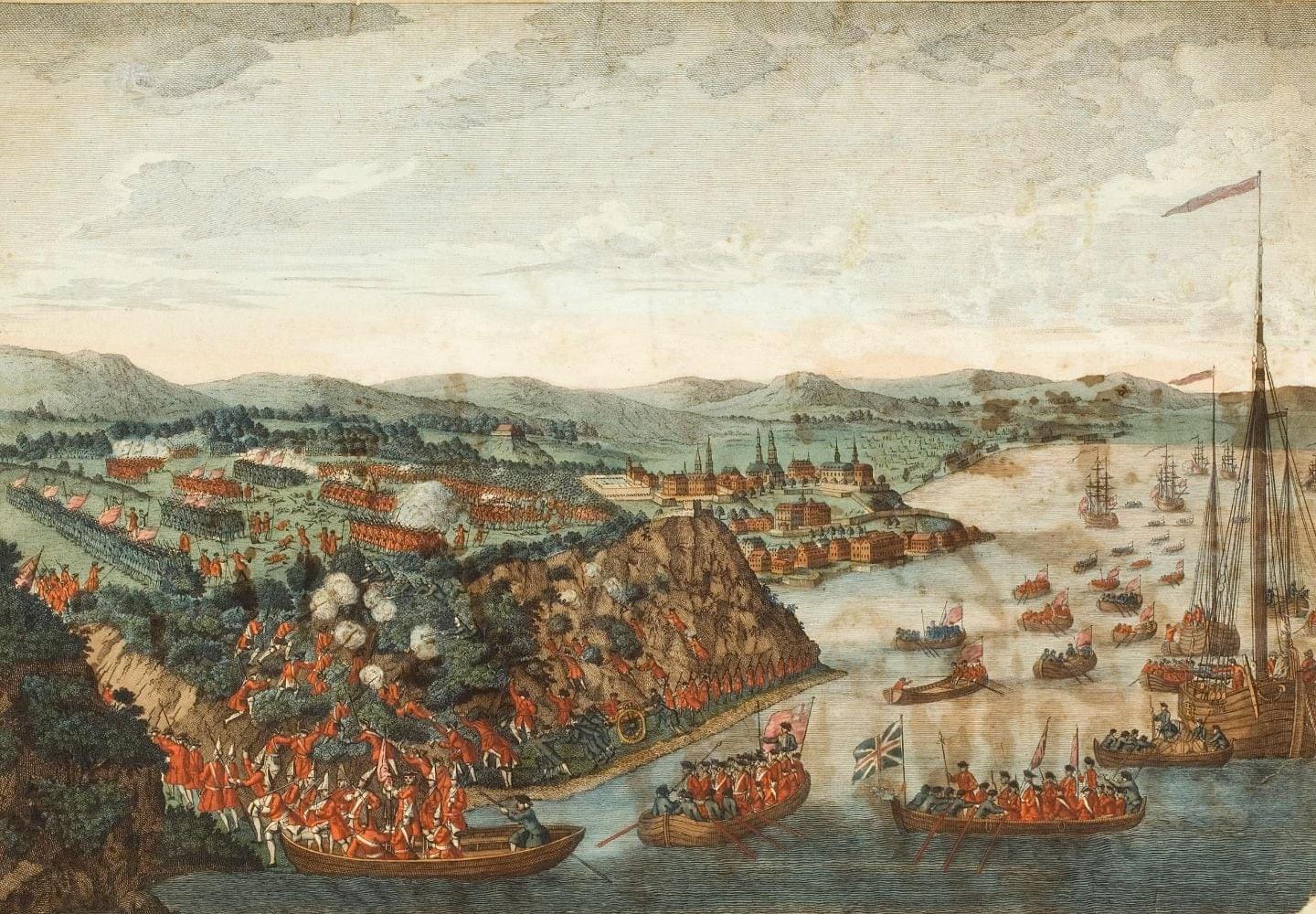
Though it took three years of hard fighting, by 1759 Great Britain broke through France’s frontier defences and had the city of Quebec under siege. British Brigadier General James Wolfe, was desperate to capture the strategically vital fortified city before winter froze the St. Lawrence river and prevented Britain’s Navy from resupplying his army. On September 13th, he landed 4500 men down river on a large field outside Quebec’s walls. France’s Commander and Chief of their army in Canada, Le Marquis de Montcalm, marched out to meet him with an army of equal size. Whereas Wolfe’s men were all professionals, Montcalm’s was force was a mixture of regular troops and Canadian militia, more accustomed to guerrilla combat than fighting in formation. The French fired several volleys with little effect, but the British waited until they were at close range before returning fire. With the French army reeling, the of Scottish Highlanders of the 78th Regiment, charged the enemy with their broadswords. In the face of this assault, the French army began a chaotic retreat. Only the cover of Indigenous and Canadian snipers in the treeline spared them from total destruction. During the fighting, both Wolfe and Montcalm received a mortal wound. Without their Commander in Chief to lead them, French forces abandoned Quebec and retreated to Montreal.
With Quebec in British hands and the Royal Navy preventing reinforcement from France, Montreal surrendered to General Jeffery Amherst, in 1760. Though the war raged on until 1763 in Europe, the fall of Montreal ended major combat in North America. During the peace negotiations, France agreed to Britain’s annexation of their colonies in Northeastern North America in order to keep the sugar producing island of Guadeloupe. In doing so, Britain removed the threat which made their American colonists dependent on the home country for protection. Annexing France’s colonies also forced the British to accommodate new Francophone Catholic subjects with the Quebec act, a decision which also angered British Americans. These grievances and others eventually culminated in the American Revolution. France’s defeat also impacted their Indigenous allies by denying nations like Odawa, Ojibwe and Wendat a reliable source of guns and ammunition. As Jeffery Amherst began building forts in their territory and American settlers poured into their land, many First Nations decided to fight before they were too weak to resist.
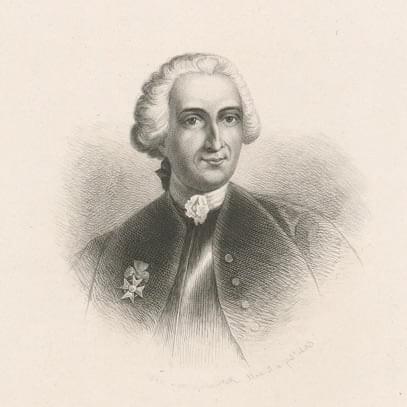
Montcalm was a seasoned veteran of the European battlefield when he arrived in Canada, and proved his worth by taking several British forts in rapid succession. However Montcalm had not been trained to cope with the guerrilla warfare common to North America and struggled to work with France’s Indigenous allies. His refusal to adapt to the realities of North American warfare helped contribute to the infamous Fort William Henry Massacre.
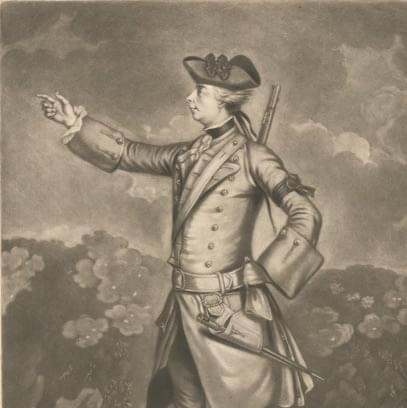
A sickly, educated young gentlemen, convinced he would die young on the battlefield, James Wolfe would prove himself to be one of the most daring and able commanders of the Seven Years War. Wolfe led from the front lines and famously carried a musket in battle, something Britain’s aristocratic officer corps rarely did. At the sieges of Louisbourg and Quebec, it was Wolfe’s take charge leadership and daring which won the day.
